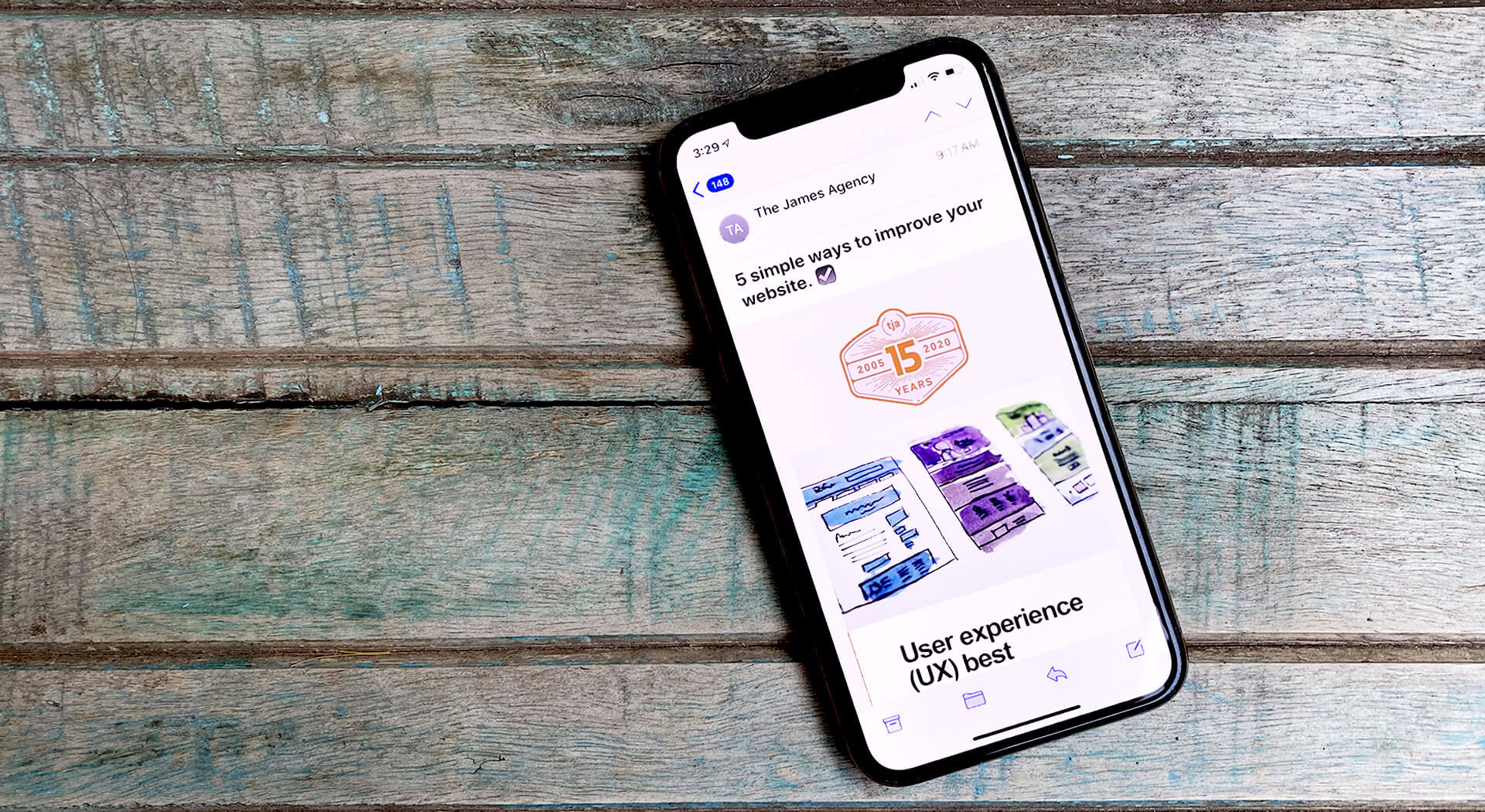Back to basics: How to get started with email marketing
An intro on how to use email to your advantage.
We have written a lot about the importance of using email to connect with your customers in “4 ways to jumpstart your email marketing” and “Our strategy to win over your customers,” but have you ever asked ‘how do you even make an email?’ Great question! In this blog, we’re laying out the basics for getting started with marketing emails.
Why is email marketing so important?
Email provides a direct connection to your subscribers through their inbox. While it’s not quite as flashy as a social media post, your email will quietly wait to be read when your subscriber is ready. That’s pretty powerful, if we do say so ourselves.
Second, an email provides a reference for your subscriber that they can return to at a later time. Having a sale? Your subscribers can search for it when they’re ready and get that coupon code without getting frustrated. That’s a much simpler solution than opening several apps and trying to figure out where they last saw something about a sale.
Third, emails can be more personal than other marketing channels. After all, your email may be nestled between messages from family members and friends. If you use that power wisely (meaning: carefully and respectfully), you can cultivate superfans from your email list.
5 steps to get started with email marketing
Alright, so now that we know why emails work well, let’s dive into what you need to make your own:
1. Choose an email marketing service (EMS)
What’s an EMS? Another great question. This is a third-party system that houses your marketing emails along with your email subscriber list. Unfortunately, you will not have much luck trying to send hundreds or thousands of emails from your work email account. Those emails would likely end up in a spam folder, or worse, undelivered. Marketing emails must go through a complicated series of authentication checks that allow your email to arrive at its destination. A lot of that technical work is done by the EMS. This part alone—in our opinion—is worth the subscription fees!
Choosing a provider requires a bit of research and investment. For a smaller business, we recommend Mailchimp as an affordable, easy-to-operate and powerful option. Our love affair with Mailchimp could probably be documented in a blog of its own. Maybe one day.
Back on topic: you will need to choose whatever option works best for your business and your budget. Luckily, there are a lot of EMSes available for businesses to use.The one you choose will largely be determined by what kind of emails you want to send. For example, if you are looking for something that will integrate with your online sales flow and send automatic emails relating to a customer’s activities, you’ll want to make sure the email service is able to perform those types of tasks.
Side note: for larger businesses, we still love Mailchimp, but you may find other services that integrate better with your existing CRM, like Salesforce Marketing Cloud.
2. Configure your EMS
We’ve previously written about how to configure your EMS–check that blog out to help you complete this step. Bottom line: make sure you complete all of the authentication steps that the platform requires so that your emails will avoid the spam filter. This is not the place to cut corners; these steps are easy to complete and very important!
3. Set up your sign-up form(s)
Once you have chosen your EMS, you’ll need to create a place (or several) where people can subscribe to your emails. First, add it to your website. You should be able to do this in a variety of ways by creating your own form and connecting it to your EMS, or by creating a form in your EMS and adding it to your website (check out the Resources section belonging to your EMS, it is a little different for each one). Second, create sign-up forms for all social media accounts. Third, if you operate in a store or other physical location where customers visit, consider creating a sign-up form that is integrated with your POS system or on a tablet located in the space.
4. Import any existing contacts
If you already have a list of people who want to receive your emails, you can import those immediately. For a brand new business, you might not have anyone to import. That’s okay! Send people to your sign-up forms that you set up in the previous step and start growing your list.
Please note that according to federal laws, you must get the permission of each subscriber before you add them to your list. Also, we strongly recommend against the temptation of purchasing an email list. These types of lists contain people that did not consent to receive your emails. More often than not, purchasing a list results in massive unsubscribe rates and spam reports. The spam reports can damage your sender reputation, causing your account to be suspended or permanently closed. Overall, it is most likely going to be a waste of money.
5. Create & send your email
Alright, you’ve set everything up and you’ve got subscribers—it’s time to send an email. Finally! Most email marketing services call emails “campaigns” and that’s where you will go to create an email. A few tips to get you started:
- Think about what you want to tell your subscribers before you start. Create an outline and write out the copy first.
- Remember that the subject line is key to getting people to open your email. Read more about how to create a subject line in 4 ways to jumpstart your email marketing. Also, remember that your company’s name should show up as the sender, so you don’t need to repeat it in the subject line.
- Add your logo and resize it to be reasonable. What’s reasonable, you may ask? Well, it’s different for everyone, but a modestly-sized logo (no more than 1/3 the width of the email for wide logos) is classier, in our opinion.
- Use the same styles (colors, fonts, button styles, etc.) that you are using on your website and elsewhere. Your emails should be a seamless extension of your website. You will find that emails have limited fonts (boo!) which is due to the lack of support in various email service providers (Gmail, Outlook, Apple Mail, etc.). Stick to the basic fonts and try to match them as close to your brand’s font as possible.
- Use photos! People love a good picture. Just make sure to resize and compress them so they are a reasonable size. We love tinypng.com for compressing image files.
- Proofread your email before hitting send. We recommend having at least one other person read through it before you hit “send.” Trust us on this one: we’ve learned the hard way.
Bonus pro-tips. What?!
Two more things to make your email marketing shine:
- Set up email templates (and use them!) so your emails look consistent each time you send them. It’s more work up front, but it will save you a ton of time later on. Future you will be so happy.
- Create an automated welcome email that will go to your new subscribers. This is an easy way to cultivate your relationship at the time when your subscriber is the most excited to receive your emails.
If all of this seems great, but overwhelming, we get it, and we can help. Contact us for any of your email marketing needs.




